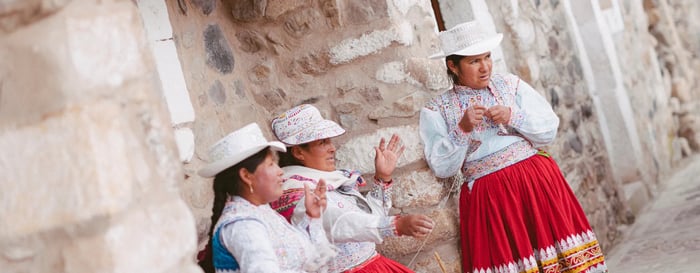Chef Bung casts a professional eye over the lush bundles of herbs piled high in front of him. He plucks one from the pile, shakes the water from the fresh basil leaves and holds them aloft for us to view. “This is Thai basil,” he says, while letting us take a closer look at the anise-scented plant. “This is holy basil and this is sweet basil.” He then reluctantly puts the fragrant bunch back in its place saying that we wouldn’t need it for our chosen dishes today.
We wander through the sprawling market that’s set by the side of the picturesque bay in Bophut. Porters are pouring bags of ice into the metal trays that line each stall. A butcher is deftly butchering a pig, while another is filling a bag with deep-fried fish, which were glistening in a crunchy golden batter.
He stops once more by what looked like four mini colourful sandcastles. These rich, sticky domes said Chef Bung formed the basis of nearly every Thai curry. Red chillies, garlic, shallots and shrimp paste had all been ground together with a pestle and mortar to create a mouthwatering display.
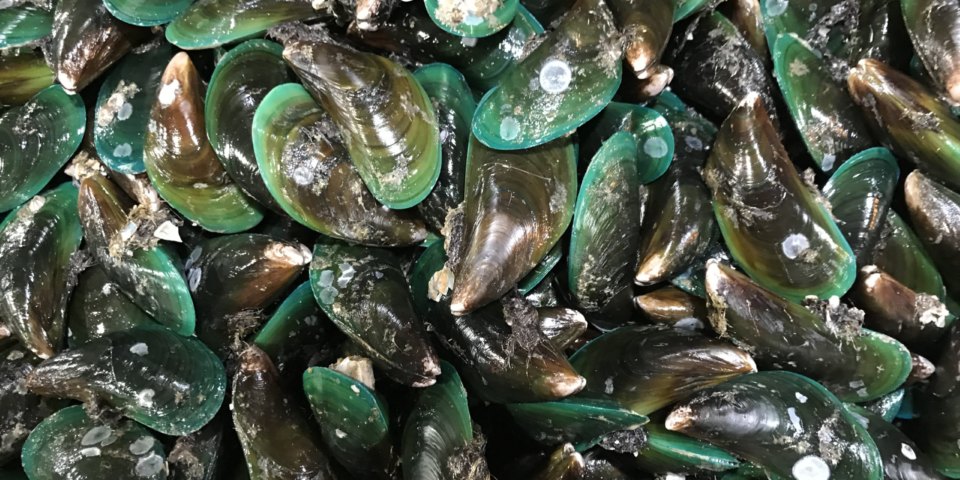 It was 9am and we were there to gather ingredients for the dishes that we were about to cook later in the day. After looking at the bags of fresh red chillies that hung from the ceiling, the plump banana flowers that he said could be used to make a curry more filling and piles of green lipped mussels, we then came across half a dozen tanks filled with eels, frogs, tortoises and shimmering metallic fish. None of them looked particularly appetising. Chef Bung put our minds at rest by telling us that these animals weren’t for eating, people would buy them to release them at the temple. According to rather detailed chart on the wall, you were destined to release a set amount of animals depending on the day you were born. I would receive a boost in health and happiness if I released eight. My friend needed to release a round 10 and another friend, just two. However, as we were needed back at the cooking school, we decided to leave this tradition to the locals.
It was 9am and we were there to gather ingredients for the dishes that we were about to cook later in the day. After looking at the bags of fresh red chillies that hung from the ceiling, the plump banana flowers that he said could be used to make a curry more filling and piles of green lipped mussels, we then came across half a dozen tanks filled with eels, frogs, tortoises and shimmering metallic fish. None of them looked particularly appetising. Chef Bung put our minds at rest by telling us that these animals weren’t for eating, people would buy them to release them at the temple. According to rather detailed chart on the wall, you were destined to release a set amount of animals depending on the day you were born. I would receive a boost in health and happiness if I released eight. My friend needed to release a round 10 and another friend, just two. However, as we were needed back at the cooking school, we decided to leave this tradition to the locals.
We climbed into the 4WD, left the seaside market behind and drove through a higgledy-piggledy map of lanes before we reached our alfresco kitchen.
Chef Bung’s cooking studio was set on the terrace that overlooked a cottage garden. A large wooden table with five burners took centre stage and this was surrounded by a table filled with ingredients, another stacked with pans and plates and one more that was covered with a checked cloth around which we would gather later to enjoy our dishes.
After cooling off with refreshing towels, we then washed our hands and donned our aprons ready to create a culinary feast.

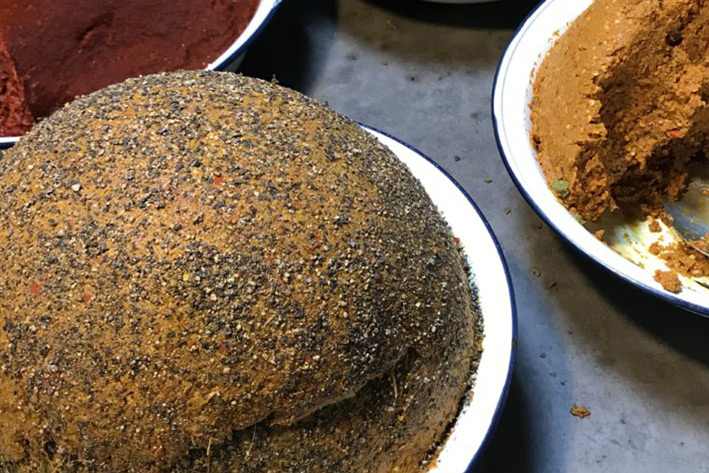
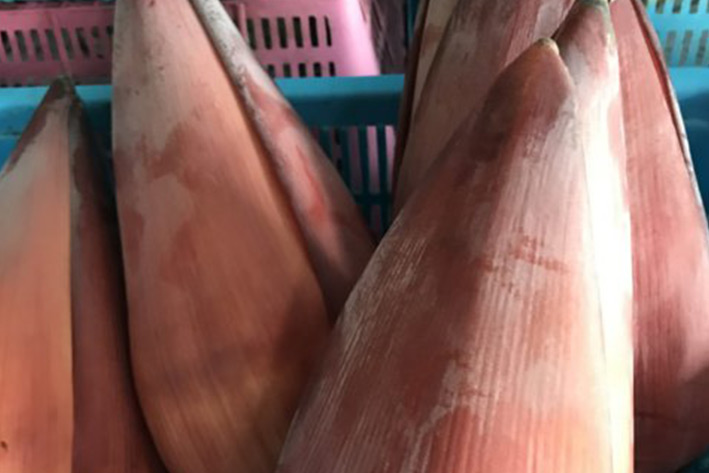
We had asked if we could make four dishes – Tom Kha soup filled with chicken and mushrooms, red chicken curry, pad Thai and papaya salad. Chef Bung explained that Thai cooking involved 90 per cent prep and about 10 per cent of time standing in front of a burner. While we didn’t know this, what we did know for sure was that it was worth making an effort, for in less than two hours we would be eating all of it.
We started by gathering together the ingredients for the pad Thai on one plate. At the end of a few minutes chopping spring onions and tofu, we put them to oneside with an egg, pickled ginger, dried shrimp, beansprouts and an egg. We then moved onto the Tom Kha soup and created another plate filled with galangal, bay leaves, mushrooms, lemon grass and shallots. The lemon grass and shallots Chef Bung said that we needed to crush rather than cut. This he said would release the fragrance instantly – and it did. The papaya we were taught how to chop the Thai way. Chef Bung encouraged us to make short, sharp slices down the length of the papaya and then we carefully shaved away the pieces.
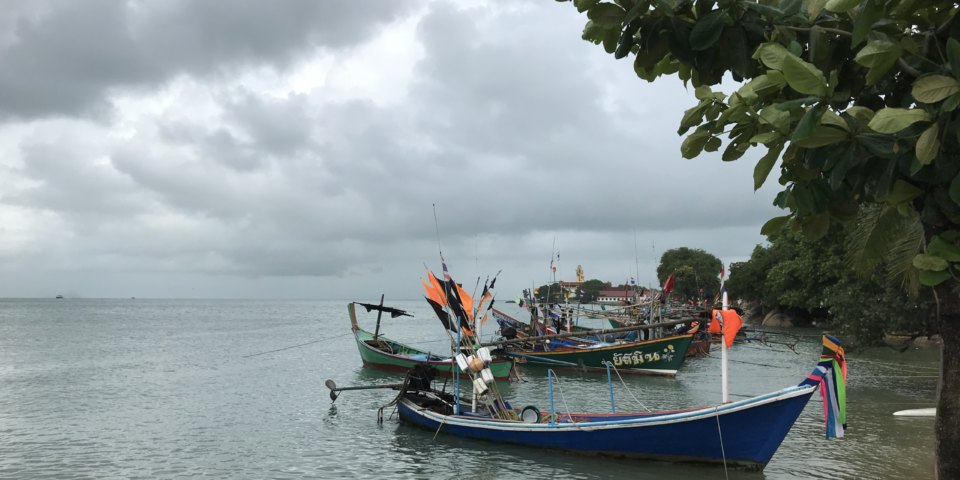 It was then time to cook the red Thai curry with beef. Into the bubbling pot we added chillies, tomatoes, pineapple and beef. The pineapple, Chef Bung explained, would help soften the beef by helping to break down its structure. While this was a new one to me, my friend was thrilled to put this idea into practise as she had only just seen someone do this on Masterchef.
It was then time to cook the red Thai curry with beef. Into the bubbling pot we added chillies, tomatoes, pineapple and beef. The pineapple, Chef Bung explained, would help soften the beef by helping to break down its structure. While this was a new one to me, my friend was thrilled to put this idea into practise as she had only just seen someone do this on Masterchef.
Next we picked up the terracotta pestle and mortar and smashed together all the ingredients for the papaya salad – a good stress reliever if ever you needed one.
The rest of the ingredients were cooked up one pan at a time. This could create a lot of washing up, but luckily as soon as we plated our dish, the kitchen staff whisked away our sticky pan to instantly replace it was another.
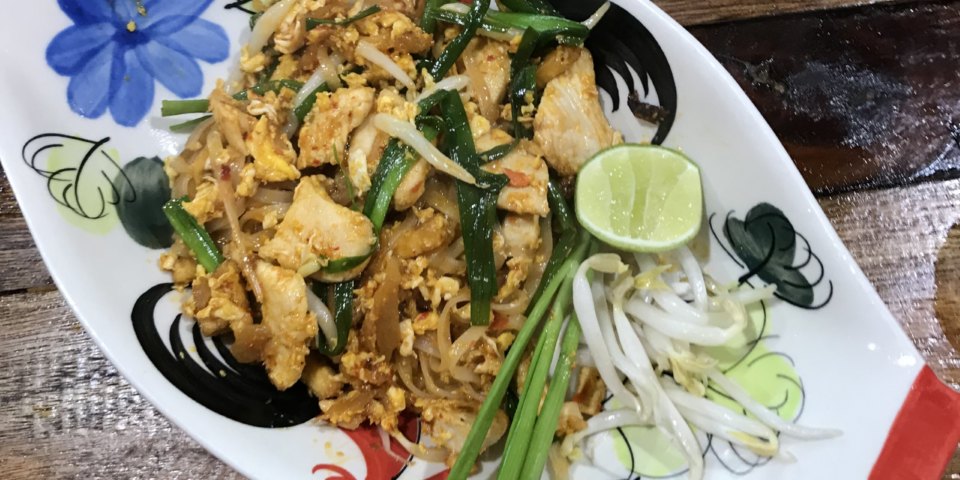 The chef walked around the table tasting our curry sauces to see if we had got our spices just right. Like the judge of a TV competition he took a spoonful from each pan, ruminated over the taste and then whispered ‘perfect’ as he wandered onto taste the contents of the next pan.
The chef walked around the table tasting our curry sauces to see if we had got our spices just right. Like the judge of a TV competition he took a spoonful from each pan, ruminated over the taste and then whispered ‘perfect’ as he wandered onto taste the contents of the next pan.
While we could have screwed up the sauce, the majority of the work had already been done for us. We were recreating family recipes that had been tweaked and passed down over the generations. They had provided the shortcuts, it was the Thai people who knew how best to smash, cut or pummel each spice or herb in order to achieve the best flavour. We were merely trying to emulate them.
However, when we sat down at the dining table and lifted the lids of each dish it still didn’t stop us from feeling proud. These colourful dishes tasted delicious and were made by our own hands. We greedily devoured the four dishes that we created for lunch and then Chef Bung returned with the final treat – a plate of mango sticky rice. While we swore that we couldn’t possibly eat another mouthful, one look of the coconut milk-soaked treat and we were soon clearing another plate.
A Culinary Journey Through Peru
Lima Cusco, Sacred Valley, & Machu Picchu
- Discover the colonial and modern side of Lima on a private guided tour
- Enjoy a typical Peruvian feast while watching a Paso horse show
- Meet Manuel Choqque, one of the world's most celebrated producers,
- Explore the magnificent Inca site of Machu Picchu
- Learn how to make traditional Peruvian dishes at a cookery class in Cusco
- Dine at some of the world's best restaurants in Cusco
Gourmet Tour of Bordeaux and Paris
- Visit Saint-Julien to learn how to taste fines wines
- Tour Bordeaux to sample the finest wines in various appellations
- Experience the subterranean church and cemetery at Saint-Emilion
- Sample cognac and learn how to pair it with food in the Cognac region
- Enjoy a private cruise on the River Seine followed by dinner at a renowned Parisian restaurant
